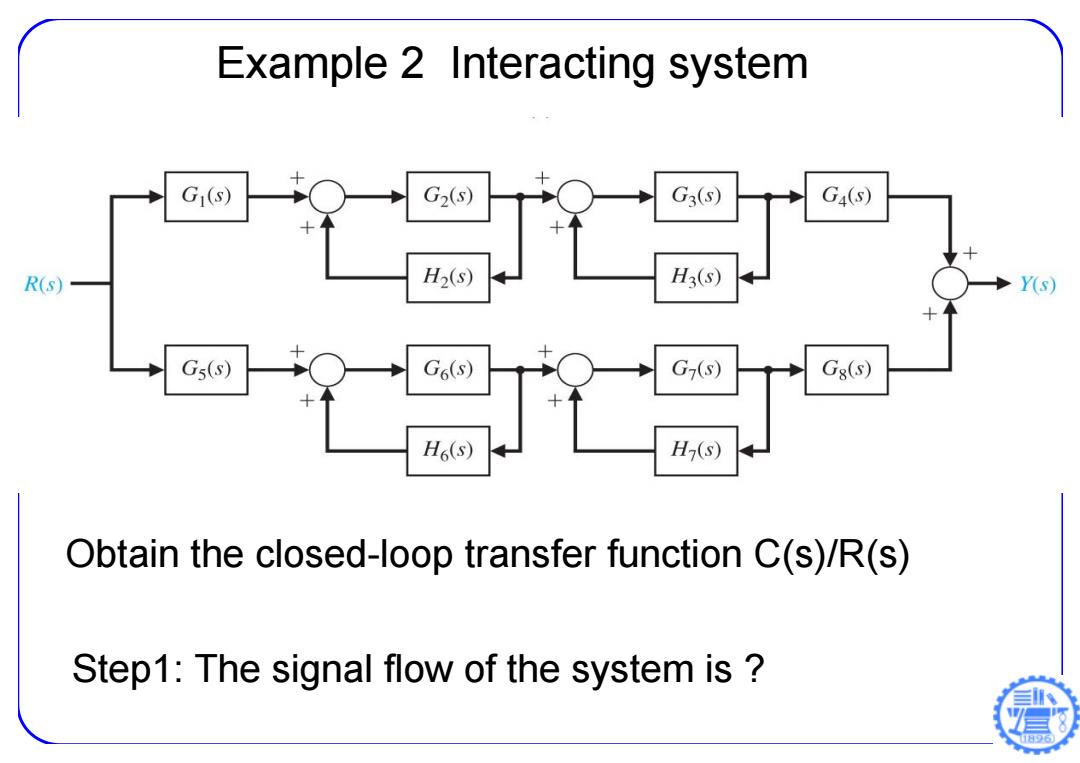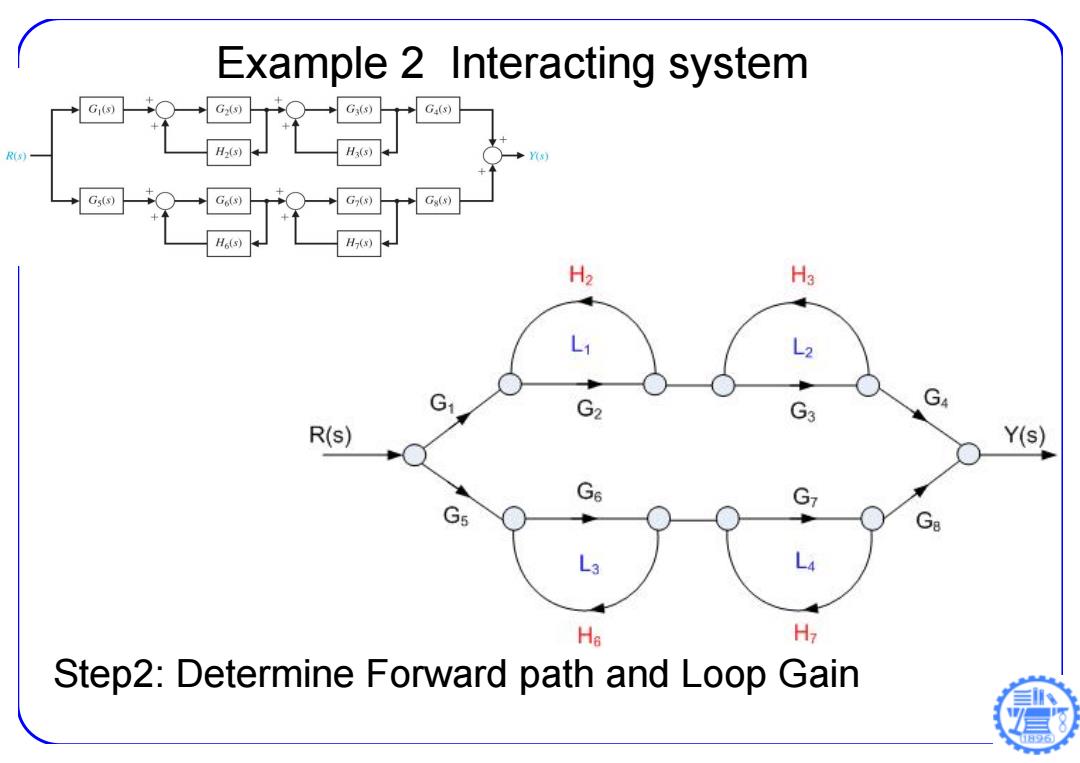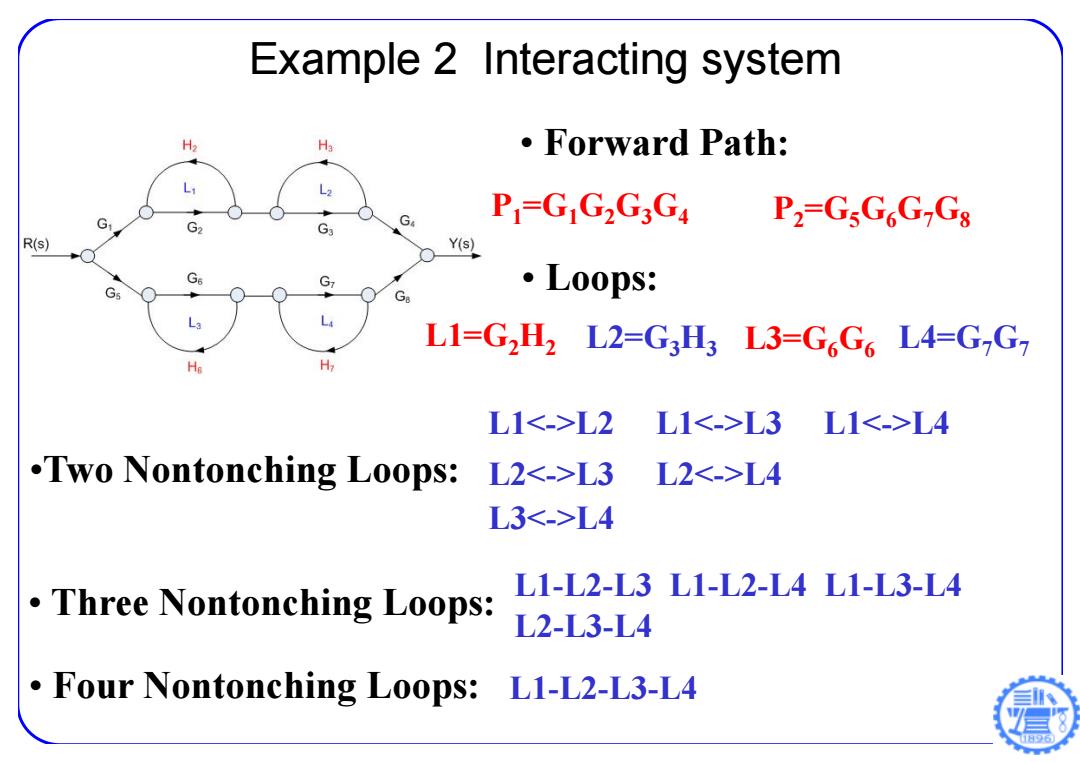
Example 2 Interacting system G1(s) G2(s) G3(s) G4(s) R(s) H2(S) H3(s) Y(s) G5(s) G6(s) G7(s) Gs(s) H6(s) H(S) Obtain the closed-loop transfer function C(s)/R(s) Step1:The signal flow of the system is 日96
Example 2 Interacting system Obtain the closed-loop transfer function C(s)/R(s) Step1: The signal flow of the system is ?

Example 2 Interacting system G1( G2(9 G3(s) Ga(s) R(S)- Hz(s) Ha(s) Y(s) G(s) G6(s) Gn(s) Gg(s) H6(s) H2 G2 GA R(s) Y(s) 26 Gs Ha H7 Step2:Determine Forward path and Loop Gain
Example 2 Interacting system Step2: Determine Forward path and Loop Gain

Example 2 Interacting system H2 Ha ·Forward Path: PI=GG2G3G4 G G P2-GsG6G7Gs G G; R(s) , G. Gs 。L00ps: L1=G2H2 L2=G3H3 L3-G6G6 L4-G7G7 H L1<->L2 L1<->L3 L1<->L4 .Two Nontonching Loops: L2<->L3 L2<->L4 L3<->L4 Three Nontonching Loops: L1-L2-L3L1-L2-L4L1-L3-L4 L2-L3-L4 Four Nontonching Loops:L1-L2-L3-L4
Example 2 Interacting system • Forward Path: P 1=G 1 G 2 G 3 G 4 •Two Nontonching Loops: L1=G 2 H 2 L2=G 3 H 3 L3=G 6 G 6 L1<->L2 L1<->L3 L1<->L4 P 2=G 5 G 6 G 7 G 8 • Loops: L4=G 7 G 7 L2<->L3 L2<->L4 L3<->L4 • Three Nontonching Loops: L1-L2-L3 L1-L2-L4 L1-L3-L4 L2-L3-L4 • Four Nontonching Loops: L1-L2-L3-L4